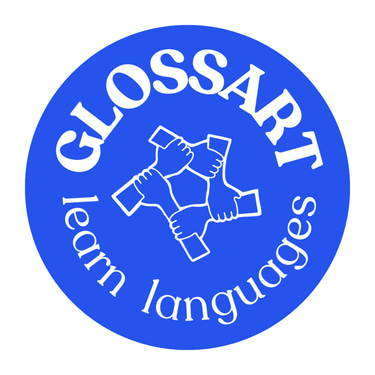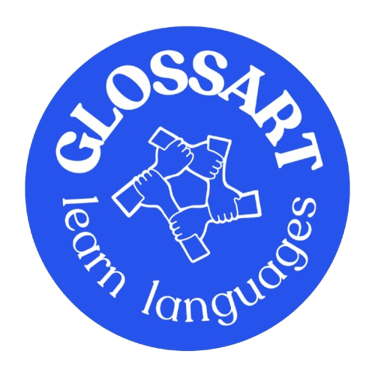Transform Your World with Language Learning at GlossArt Languages!
The Language of Halloween: How Words, Myths & Cultures Intertwine
Halloween is more than costumes , it’s a story of language and memory. Explore how myths and words evolve across cultures and centuries with Glossart Languages.
Evangelia Perifanou
10/29/20254 min read


🎃 The Language of Halloween: When Words, Myths, and Cultures Cross Paths
A Night Where Words Remember
Halloween is not only a night of costumes, candy, and carved pumpkins.
It is a linguistic time capsule , a moment when words, myths, and human imagination whisper stories from the past.
The word Halloween itself comes from “All Hallows’ Eve”, the night before All Saints’ Day. Yet long before Christianity gave it a name, the Celts in ancient Ireland and Scotland celebrated Samhain, a festival marking the passage from light to darkness, from harvest to winter, from life to the realm of spirits.
Language, like spirit, never disappears.
It transforms.
Hallow became holy, Samhain became Halloween, and rituals once spoken in Gaelic now echo in countless languages around the world.
Halloween reminds us that language is alive, and that words are the oldest form of magic we possess.
The Journey of a Celebration Through Tongues and Cultures
Halloween speaks in many accents it travels, transforms, and translates itself wherever it lands.
From Europe to Latin America to Asia, each culture reinvents it, adding its own rhythm, flavors, and meanings.
Italy:
Halloween arrived only a few decades ago, yet Italians embraced it with creative warmth. Cities fill with orange lights, schools hold costume contests, and shops sell dolcetti o scherzetti (treats or tricks). Still, the heart of Italian tradition remains Ognissanti and I Morti on November 1st and 2nd , quiet days of remembrance, when families visit cemeteries, light candles, and share ossa dei morti cookies. The Italian version of Halloween blends playfulness with profound respect for memory.Japan:
Though not rooted in Japanese folklore, Halloween has become a striking display of collective creativity. Streets of Tokyo, especially Shibuya, turn into open-air parades of costumes, from anime heroes to ghosts. Japanese culture transforms Halloween into an art form , more fashion than fright, more celebration than superstition. Beneath the neon colors lies something deeper: the universal joy of expression through disguise, a language Japan speaks fluently.France:
La fête d’Halloween is modern, playful, and increasingly popular among children. French classrooms use it as a linguistic tool teaching English words like pumpkin, witch, and ghost through games and stories. Yet in France, it coexists with La Toussaint, a day of flowers and family reflection. The French approach reminds us that language and culture can coexist like light and shadow each enriching the other.Brazil:
Halloween found a tropical soul in Brazil. Known as Dia das Bruxas (Day of the Witches), it combines global imagery with Brazilian joy. Schools, universities, and even language academies use it to explore English vocabulary and intercultural understanding. Yet some Brazilians celebrate Saci Day on the same date honoring the mischievous one-legged folk spirit of Afro-Indigenous mythology. Brazil teaches us that new traditions don’t erase old ones , they dance together.South America:
Across Latin America, Halloween mingles with older, richer traditions. In Mexico, Día de los Muertos transforms fear into art , families build altars for their loved ones with marigolds, candles, and sugar skulls. In Argentina, Chile, and Colombia, children adapt trick or treat into their own words and laughter. Each country adds a note to the same melody: that remembrance and joy are not opposites, but partners in the music of culture.Spain
In Spain, Halloween (Noche de Brujas) blends with El Día de Todos los Santos and El Día de los Difuntos. Children now go door to door saying “¿Truco o trato?”, while adults attend theatre performances, decorate with pumpkins, or visit cemeteries to honor loved ones. In Galicia, the ancient Celtic festival Samaín has been revived, showing that Spain’s connection to Halloween is not imported , it’s ancestral.
Greece
Halloween isn’t a native tradition in Greece, yet it resonates deeply with the country’s ancient understanding of life and death. Greek culture already celebrates Psychosavvato, “Saturday of Souls,” when families light candles for their ancestors — a practice that echoes Samhain’s spirit. Younger generations celebrate Halloween through English classes, costume parties, and urban festivals. Like the Greek language itself, Halloween here becomes a dialogue between memory and reinvention.Halloween, like language itself, belongs to everyone who reinterprets it.
It evolves through tongues and customs, carrying within it the same ancient instinct: the need to name what we fear and celebrate what we love.United States
In the U.S., Halloween became what it is today , a global symbol of imagination, community, and storytelling. Rooted in Irish and Scottish immigrant traditions, it grew into a cultural phenomenon where homes glow with pumpkins, children parade in costumes, and creativity knows no age. Beyond the candy, Halloween in America reflects something universal: the human need to transform fear into play, and solitude into shared laughter.Why Language Learning and Cultural Myths Go Hand in Hand
At Glossart Languages, we believe that learning a language is not just about grammar it’s about feeling the culture behind every word.
Halloween illustrates how myths, traditions, and words evolve together:
When people migrated, they carried their stories and with them, their languages.
When new cultures met, words merged, transformed, or adapted to fit new realities.
When we learn a new word today, we continue that ancient act of transmission.
Language is humanity’s way of preserving what it fears and loves.
Just as Samhain evolved into Halloween, every student evolves through their language journey turning confusion into understanding, and curiosity into communication.
The Deeper Lesson of Halloween
Halloween may look like a playful tradition, but at its heart lies a timeless message:
Language is survival.
It survives through stories told around fires, through songs sung to children, through lessons whispered in classrooms like yours.
It travels, adapts, and disguises itself just like the children on Halloween night.
A Universal Language of Celebration
Halloween, like language itself, belongs to everyone who reinterprets it.
It evolves through tongues and customs, carrying within it the same ancient instinct:
the need to name what we fear and celebrate what we love.
It teaches us that no matter where we live or what language we speak,
the act of sharing stories even spooky ones reminds us that words are the bridges between worlds.That’s why at Glossart Languages, we celebrate more than just words.
We celebrate the human connection behind them , the courage to speak, the curiosity to learn, and the joy of understanding one another across borders and generations.
#GlossartLanguages #LanguageLearning #LearnLanguagesOnline #LanguageJourney #MultilingualLearning #CulturalLearning #LanguageAndCulture #PolyglotLife #LanguageLovers #LanguagePassion #SpeakTheWorld #LearnWithGlossart #OnlineLanguageSchool #LanguageEducation #LinguisticInspiration3BlogPost #GlossartBlog #LanguageBlog #EducationBlog #CulturalBlog #LearningCommunity #OnlineLearning #LifelongLearning #EducationThroughCulture #GlobalLearning #InspireToLearn


